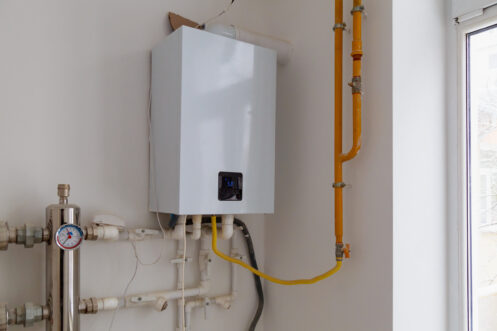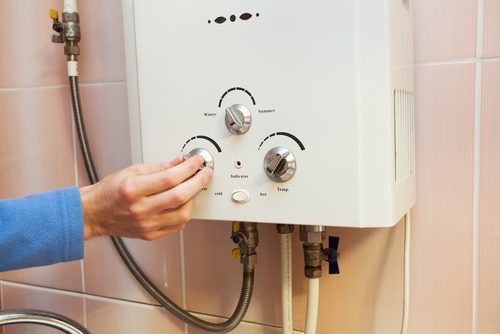What to Care for Your Home's Hot Water System Properly
What to Care for Your Home's Hot Water System Properly
Blog Article
The author is making several good observations on How to Maintain a Hot Water Heater in a Few Simple Steps overall in this post following next.

Warm water is necessary for daily convenience, whether it's for a refreshing shower or washing meals. To guarantee your hot water system runs effectively and lasts much longer, regular upkeep is vital. This article provides sensible pointers and insights on exactly how to preserve your home's hot water system to prevent disturbances and expensive fixings.
Intro
Maintaining your home's warm water system could seem challenging, but with a couple of straightforward actions, you can guarantee it operates smoothly for many years to come. This guide covers every little thing from recognizing your warm water system to do it yourself upkeep pointers and recognizing when to employ expert help.
Importance of Keeping Your Hot Water System
Routine maintenance not just extends the life-span of your hot water system however additionally guarantees it runs effectively. Neglecting upkeep can result in decreased effectiveness, higher power expenses, and also premature failure of the system.
Indicators Your Hot Water System Requirements Upkeep
Recognizing when your warm water system requires focus can protect against major problems. Look out for indications such as irregular water temperature, unusual sounds from the heater, or corroded water.
Comprehending Your Warm Water System
Prior to diving right into maintenance tasks, it's handy to comprehend the basic parts of your hot water system. Commonly, this includes the hot water heater itself, pipes, anode rods, and temperature controls.
Monthly Maintenance Tasks
Normal month-to-month checks can assist catch minor concerns before they escalate.
Flushing the Hot Water Heater
Flushing your water heater eliminates debris accumulation, improving effectiveness and prolonging its life.
Monitoring and Changing Anode Rods
Anode poles protect against corrosion inside the container. Checking and changing them when worn out is vital.
Examining and Readjusting Temperature Setups
Readjusting the temperature settings guarantees ideal performance and safety and security.
DIY Tips for Upkeep
You can do several maintenance tasks yourself to maintain your hot water system in top problem.
Checking for Leaks
On a regular basis inspect pipes and links for leakages, as these can result in water damages and greater expenses.
Examining Stress Alleviation Valves
Examining the stress relief valve ensures it functions correctly and protects against too much stress accumulation.
Protecting Pipes
Insulating warm water pipelines minimizes heat loss and can save energy.
When to Call a Professional
While DIY maintenance is valuable, some issues need expert knowledge.
Facility Concerns Needing Expert Assistance
Examples include significant leakages, electrical problems, or if your water heater is constantly underperforming.
Routine Expert Maintenance Conveniences
Specialist upkeep can consist of extensive assessments, tune-ups, and making sure compliance with safety and security standards.
Final thought
Normal maintenance of your home's hot water system is essential for performance, long life, and price financial savings. By adhering to these ideas and understanding when to seek specialist help, you can make sure a dependable supply of warm water without unexpected disturbances.
How to Maintain an Instant Hot Water Heater
Before tinkering with your hot water heater, make sure that it’s not powered on. You also have to turn off the main circuit breaker and shut off the main gas line to prevent accidents. Also turn off the water valves connected to your unit to prevent water from flowing into and out of the appliance. 2. When you’re done, you have to detach the purge valves’ caps. These look like the letter “T†and are situated on either side of the water valves. Doing so will release any pressure that has accumulated inside the valves while at the same time avoid hot water from shooting out and burning your skin. 3. When the purge valves’ caps are removed, you have to connect your hosing lines to the valves. Your unit should have come with three hoses but if it didn’t, you can purchase these things from any hardware or home repair shops. You can also get them from retail stores that sell water heating systems. Read the user’s manual and follow it to complete this task properly. When the hosing lines are connected, open the purge port’s valves. 4. You should never use harsh chemical cleaners or solutions when cleaning your unit. Make use of white vinegar instead. It should be undiluted and you’ll probably use about 2 gallons. 5. Now flush your water heater. This task should probably take about 40 minutes. We can’t give you specific directions for this because the procedure is carried out depending on the type, model and brand of your heater. With that being said, refer to the user’s manual. 6. When you’re done draining the unit, you have to turn off the purge port valves again. Remove the hosing lines that you earlier installed on each of the water valves. Put the valve caps (purge port) back in their respective places and be very careful so as not to damage the rubber discs that are found inside these caps. 7. Now that everything’s back in place, check your user’s manual again to find out how to reactivate your water heating system. 8. Once it is working, turn one of your hot water faucets on just to let air pass through the heater’s water supply pipes. Leave the tap on until water flows smoothly out of it. https://www.orrplumbing.com/blog/2014/september/how-to-maintain-an-instant-hot-water-heater/

I stumbled upon that piece of writing on Tips on Maintaining a Water Heater when doing a search on the web. Enjoyed our article? Please quickly share it. Help someone else locate it. I cherish reading our article about Water Heater Maintenance Tips You Can't Afford to Forget.
Book Service Report this page